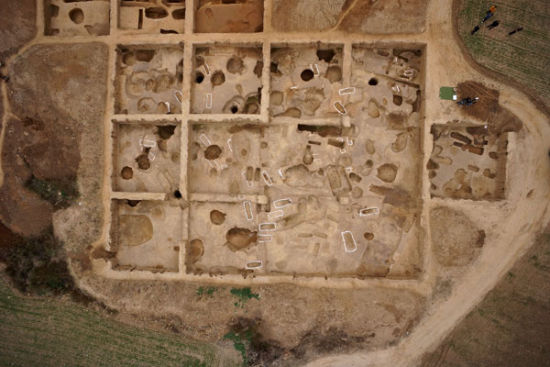2,800-year-old bear skeleton unearthed
Xinhua, October 23, 2014 Adjust font size:
A bear skeleton unearthed in central China's Henan Province may reveal that Chinese people tamed bears at least 2,800 years ago, said archeologists.
 |
|
The skeleton was discovered at a cultural relic site in Taohe Town in Nanyang City by archeologists from Henan Provincial Institute of Cultural Relics and Archaeology. |
The skeleton was discovered at a cultural relic site in Taohe Town in Nanyang City by archeologists from Henan Provincial Institute of Cultural Relics and Archaeology. They estimate that the relic where the beast was buried was a sacrificial pit from the late period of the Western Zhou Dynasty (11th century to 771 BC).
"We don't know yet when Chinese began to tame bears, but from the discovery of the skeleton we can at least infer that they had the practice during the late Western Zhou Dynasty," said Ma Xiaolin, an archaeologist.
After analyzing the bones, scientists speculated that the bear was tamed by ancient Chinese for offering to ancestors.
Judging from the shape of the beast's teeth and skull, it was a black bear, said Hou Yanfeng, another archaeologist with HPICA. It was male, based on the large sagittal crest on its skull, he added.
After examining its lower teeth, scientists believe that it died when it was five years old. They also found that the bear's left leg was 29 mm shorter than the right one.
"To further investigate the cause of the limp, we had the left leg bone X-rayed and found that the leg had probably suffered from a fracture when the bear was a cub."
Hou said the sacrificial pit is located at the birthplace of Chu, an ancient Chinese state in today's neighboring provinces of Hubei, Hunan and Henan. "Chu people bore the ancestral name of Xiong, or Bear, so it is very likely that bears were tamed and raised for sacrificial use at that time."

